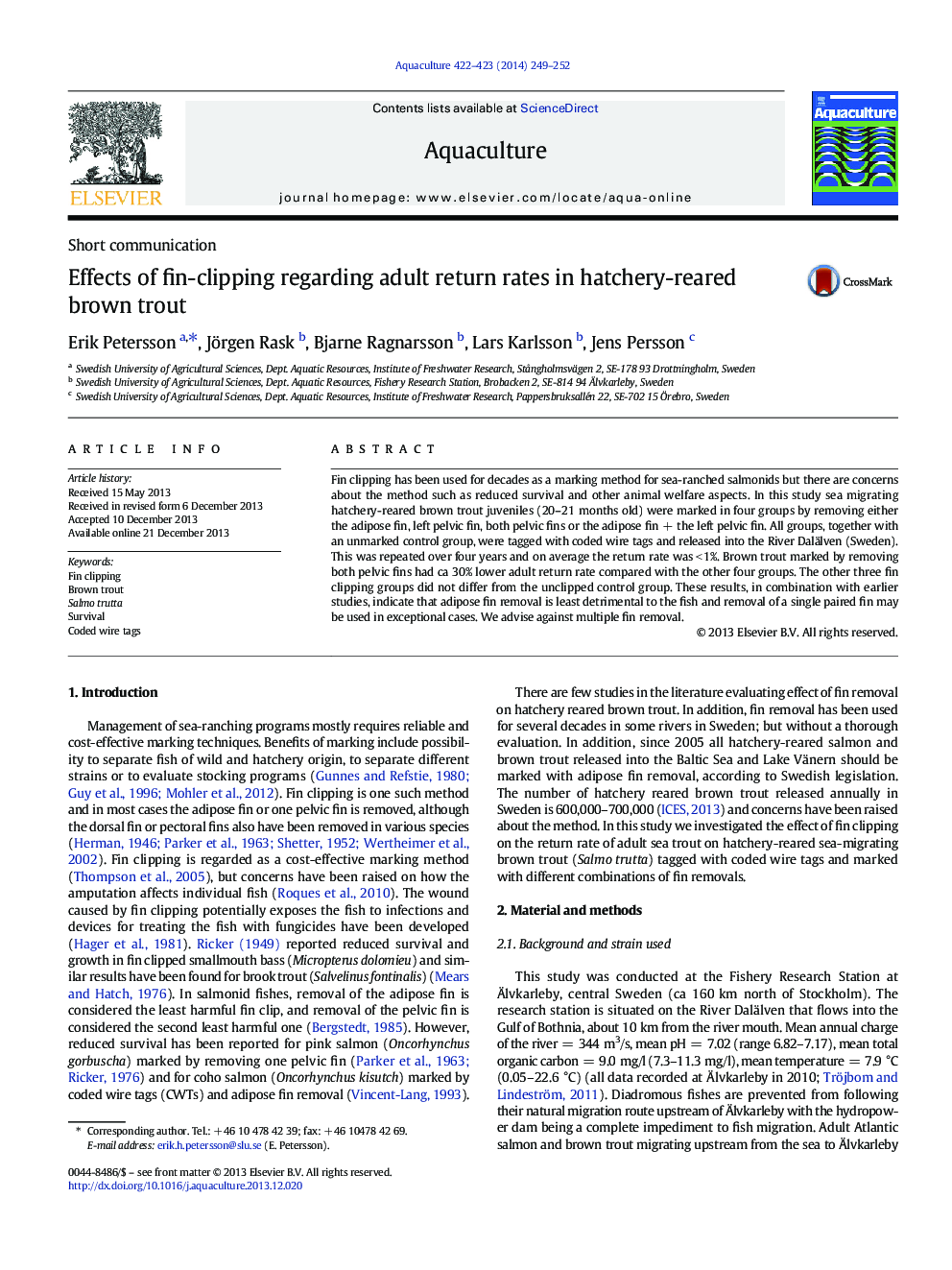| Article ID | Journal | Published Year | Pages | File Type |
|---|---|---|---|---|
| 2421962 | Aquaculture | 2014 | 4 Pages |
•Removing both pelvic fins reduced adult return rate with 30% in brown trout.•Single pelvic fin or adipose fin removal did not differ from control.•Smaller fish had higher immediate mortality due to marking.
Fin clipping has been used for decades as a marking method for sea-ranched salmonids but there are concerns about the method such as reduced survival and other animal welfare aspects. In this study sea migrating hatchery-reared brown trout juveniles (20–21 months old) were marked in four groups by removing either the adipose fin, left pelvic fin, both pelvic fins or the adipose fin + the left pelvic fin. All groups, together with an unmarked control group, were tagged with coded wire tags and released into the River Dalälven (Sweden). This was repeated over four years and on average the return rate was < 1%. Brown trout marked by removing both pelvic fins had ca 30% lower adult return rate compared with the other four groups. The other three fin clipping groups did not differ from the unclipped control group. These results, in combination with earlier studies, indicate that adipose fin removal is least detrimental to the fish and removal of a single paired fin may be used in exceptional cases. We advise against multiple fin removal.
